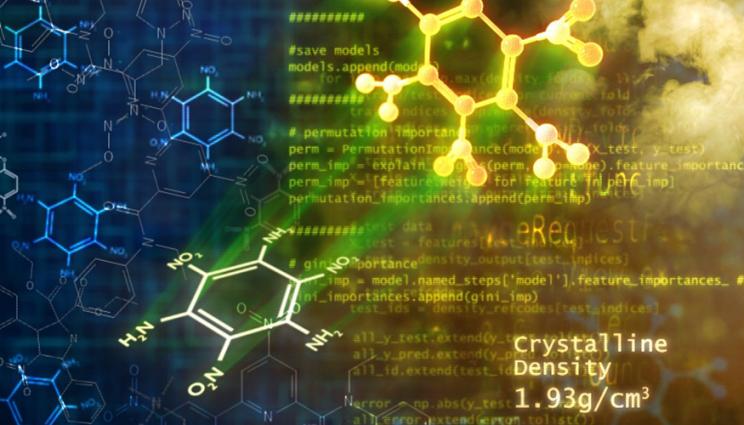
Scientists developed a machine learning algorithm to predict 3D molecular crystal density from 2D chemical structures.
A long-held goal by chemists across many industries, including energy, pharmaceuticals, energetics, food additives and organic semiconductors, is to imagine the chemical structure of a new molecule and be able to predict how it will function for a desired application. In practice, this vision is difficult, often requiring extensive laboratory work to synthesize, isolate, purify and characterize newly designed molecules to obtain the desired information.
Recently, a team of Lawrence Livermore National Laboratory (LLNL) materials and computer scientists have brought this vision to fruition for energetic molecules by creating machine learning (ML) models that can predict molecules' crystalline properties from their chemical structures alone, such as molecular density. Predicting crystal structure descriptors (rather than the entire crystal structure) offers an efficient method to infer a material's properties, thus expediting materials design and discovery. The research appears in the Journal of Chemical Information and Modeling.
"One of the team's most prominent ML models is capable of predicting the crystalline density of energetic and energetic-like molecules with a high degree of accuracy compared to previous ML-based methods," said Phan Nguyen, LLNL applied mathematician and co-first author of the paper.
"Even when compared to density-functional theory (DFT), a computationally expensive and physics-informed method for crystal structure and crystalline property prediction, the ML model boasts competitive accuracy while requiring a fraction of the computation time," said Donald Loveland, LLNL computer scientist and co-first author.
Members of LLNL's High Explosive Application Facility (HEAF) already have begun taking advantage of the model's web interface, with a goal to discover new insensitive energetic materials. By simply inputting molecules' 2D chemical structure, HEAF chemists have been able to quickly determine the predicted crystalline density of those molecules, which is closely correlated with potential energetics' performance metrics.
"We are excited to see the results of our work be applied to important missions of the Lab. This work will certainly aid in accelerating discovery and optimization of new materials moving forward," said Yong Han, LLNL materials scientist and principal investigator of the project.
Follow-up efforts within the Materials Science Division have used the ML model in conjunction with a generative model to search large chemical spaces quickly and efficiently for high density candidates.
"Both efforts push the boundaries of materials discovery and are facilitated through the new paradigm of merging materials science and machine learning," said Anna Hiszpanski, LLNL material scientist and co-corresponding author of the paper.
The team continues to search for new properties of interest to the Lab with the vision of providing a suite of predictive models for materials scientists to use in their research.
Other authors of the work include Joanne Kim and Piyush Karande. This work was funded by LLNL's Laboratory Directed Research Development program.






